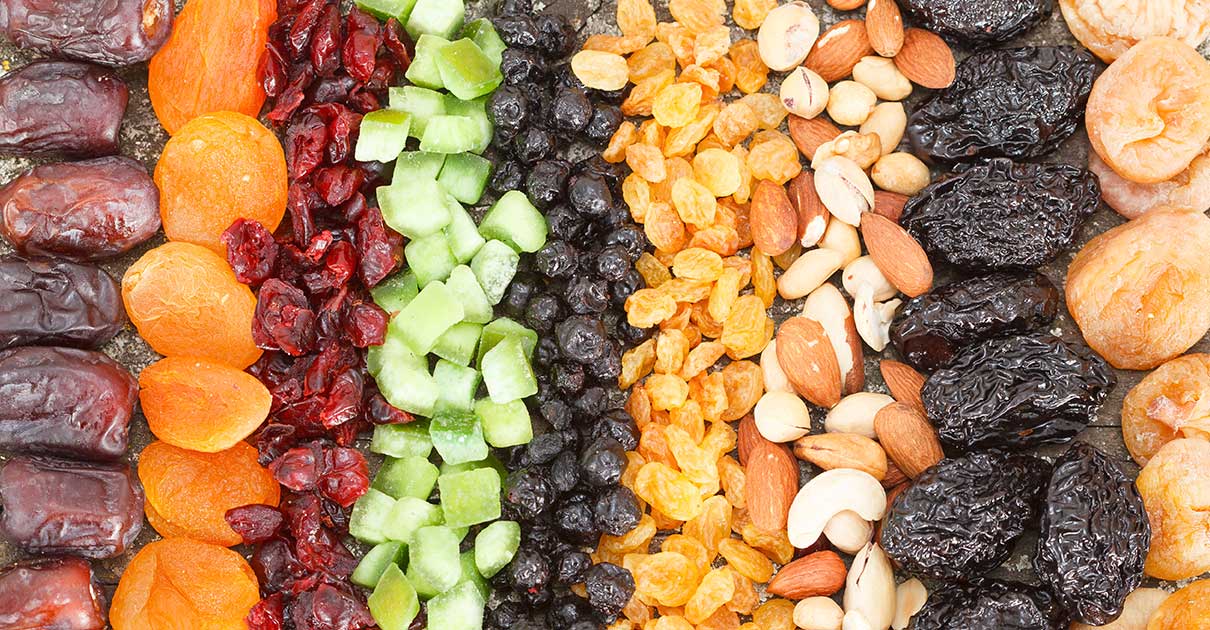Fruit is like natures own candy. Except it also supplies us with beautiful doses of vitamins, nutrients, fiber and antioxidants, all of which helping us to live healthier lives. Best of all, fruits are included in the Paleo lifestyle.

Surely it goes without saying then that dried fruit is just as healthy and also appropriate for Paleo followers?
Not so fast.
What is Dried Fruit?
Essentially dried fruit is fruit which has been dehydrated of all water. What is left over is the shrunken whole fruit (in the case of raisins) or otherwise a piece of dried fruit in the case of apples or pineapples etc. So far so good.
Why is dried fruit a problem?
When you bite into a juicy apple, or a lovely piece of freshly cut mango the juice practically runs down your face. This juice, which is mainly water, is what fills us when we are eating fruit. For instance, in general one would normally only eat one apple at a time or perhaps a few pieces of pineapple. The fruit, as a whole with its intended liquid content is pretty satisfying. It is also nice and sweet but not as sweet as sugar thanks to the water in a whole fruit.
Dried fruit is unfortunately severely dehydrated, which means the fruit has suddenly shrunk to a tenth of its size. It is also suddenly extremely sweet and therefore extremely addictive. Think about raisins for a second. If you reached for some grapes you would most probably grab a bunch and that would be it. But a hand full of raisins is easily two bunches of grapes!
The other issue of course is how sweet dried fruit is. This intense sweetness may perpetuate the cravings for other sweet items, it also makes it so much more difficult to practice portion control and your ‘healthy intentions’ end up being a flood of sugar.
Another disadvantage to eating dried fruit is a loss of nutrients. Many heat sensitive nutrients such as vitamin C get damaged in the drying process which is mostly via artificial methods and not the sun (1).
Lastly, commercially dried fruit often contains preservatives called sulphites to increase the shelf life as well as preserve the color of the dried product. These problem with these sulphites is that many people might suffer from a few different side effects such as a rash, tight chest or even an asthma attack (2)
Any advantages at all?
Well of course, dried fruit are actually still fruit (minus the water). The one very clear advantage to consuming dried fruit is the increased concentration of antioxidants from dried fruit. Interestingly dried figs and dried plums in particular came out on top in terms of antioxidants in the dried product (3).
Another great reason for giving dried fruit a bit of credit is the prune (which is a dried plum) . The mighty prune is a miracle worker when it comes to helping babies and adults alike with digestive issues such as constipation or being irregular. The prune contains sorbitol as well as a great deal of fiber which is a natural laxative (4)
So is Dried Fruit Paleo Appropriate?
The answer here is a very personal one. Yes, dried fruits, without any additives are by nature Paleo as they have not been processed as such and are simply dehydrated. But, they are also very high in sugar and they can easily be overeaten due to their small size. Decide for yourself whether having them in the house will help you or harm you, and where possible opt for fresh fruit instead.
Try these delicious homemade dried fruit rolls for dried fruit with a difference:
Blackberry Paleo Fruit Roll-ups
Is Dried Fruit Paleo? (+ Why It Can Be Very Unhealthy)
Anthea Poppmeier
0 Comments